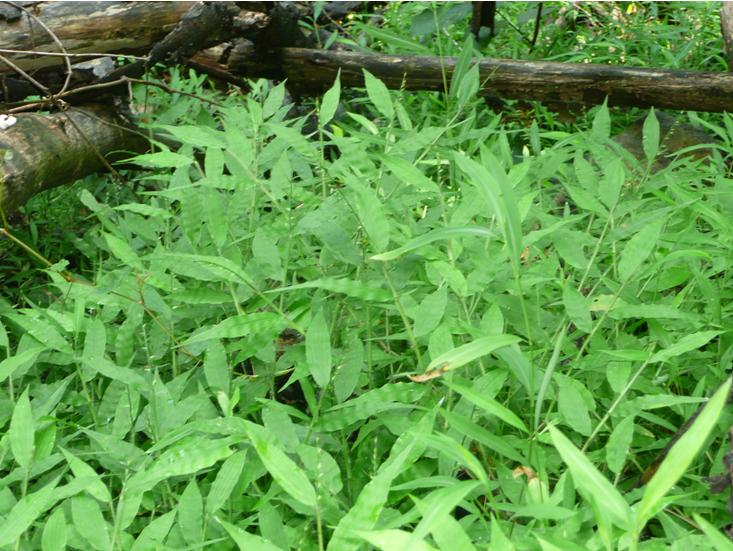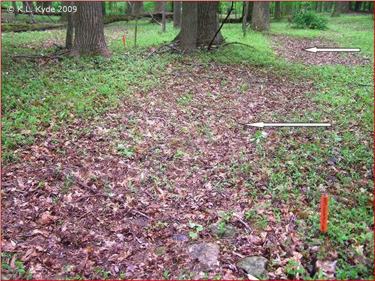The Two Methods:
There are two methods of removing wavyleaf basketgrass: hand-pulling and using herbicide treatments. Which method you should use depends on a number of factors, including the time of year, amount of wavyleaf basketgrass present, and the location of the infestation.

A patch of blooming wavyleaf basketgrass.
What time of year is it?
If it is April, May or June and the wavyleaf basketgrass is not blooming, then either hand-weeding or the herbicide clethodim are the best controls. Later in the growing season (July, August, September and October), the better herbicide to use will be glyphosate, but you can still hand-weed.
How much wavyleaf basketgrass is present?
The size of the infestation will determine how you control wavyleaf basketgrass. If you're only seeing a few plants, pull them out and hang them on a tree branch to dry. If acres of wavyleaf basketgrass carpet the ground, you're going to need help. Map it, report it, let the landowner know if isn't your land, and if it is your land, plan on using either lots of volunteers to pull it out or spray it with an appropriate herbicide.
If there are only a few plants present, pull them out and hang them on a tree branch so the roots will dry out and die.
Where did you find it?
If you're on someone else's land when you find wavyleaf basketgrass, you should report it to the landowner who can treat the infestation. Don't take the plants or uncontained seeds off the property where you found them, unless you're sure you can properly destroy them.
How to effectively hand-pull:
It is important that the above-ground runners be carefully pulled from the leaf litter without breaking. If you leave a piece of these runners (also known as stolons), a new plant can sprout from it. After you pull the plants up, hang them in a tree branch to dry out so they don't re-root. The seeds need to be double-bagged, sealed and destroyed. At the moment, the best way to destroy the seeds is by burning them.
Which herbicides are effective:
Clethodim (sold as "Envoy Plus" or "Envoy") is non-residual, grass selective and will not kill sedges nor broadleaf herbs and woody plant seedlings. Clethodim is listed for "Parks" and not for "forests," and it must be ordered. Its use is not restricted to holders of pesticide licenses. Use clethodim if it is April, May or June — before wavyleaf basketgrass blooms.
Glyphosate (the active ingredient in 'Round-up WM18 & WM36" ) consists of the active ingredient and a surfactant which helps it stick to the leaf. Because the surfactant composition is currently thought to be critical in terms of negative impact on ecosystems we encourage you to use a glyphosate that is 'aquatic approved' on its label. Use glyphosate if it is July, August, September and October — later in the growing season. Make sure to use an 'aquatic approved' glyphosate if the infestation is in an area subject to runoff into water or is near a stream, pond, or river.
 |
| The site to the rear was controlled by hand-pulling, while the site in the front used clethodim (a grass-specific herbicide) treatment; note that there's not a lot of difference in remaining wavyleaf basketgrass plants. A follow-up treatment is necessary but much less work. (Photo credit: Kerrie Kyde 2009) |

